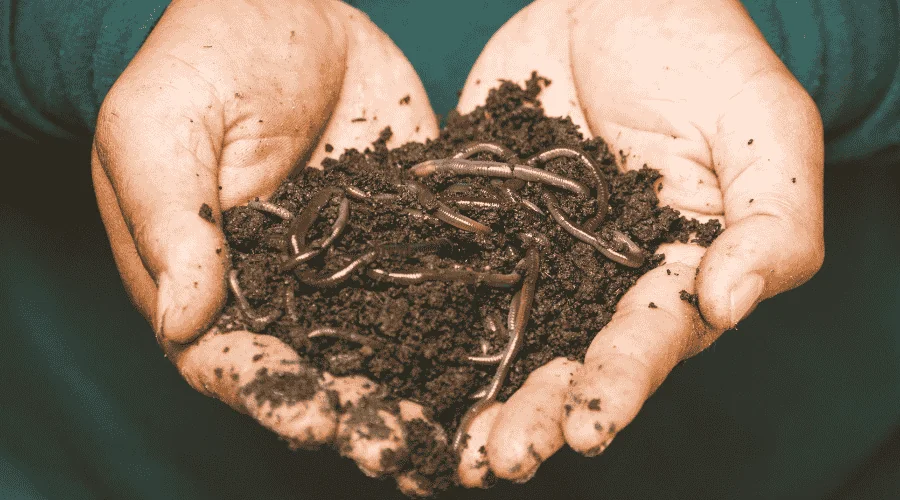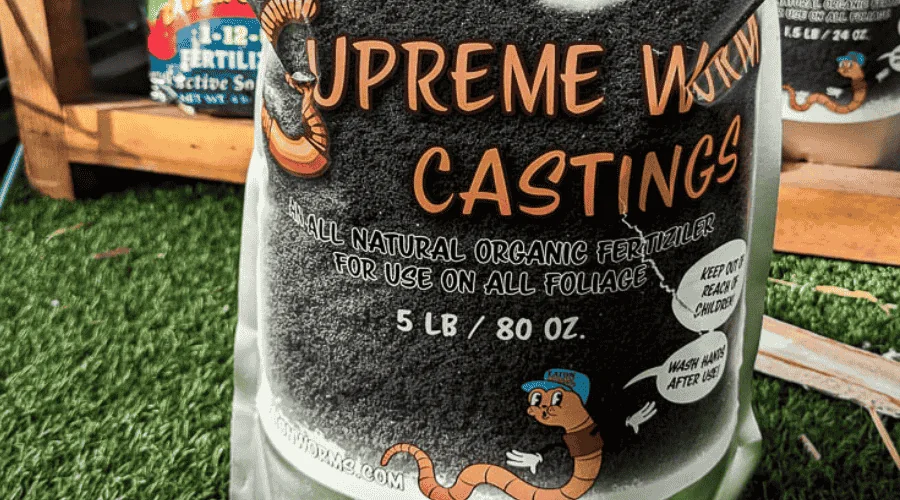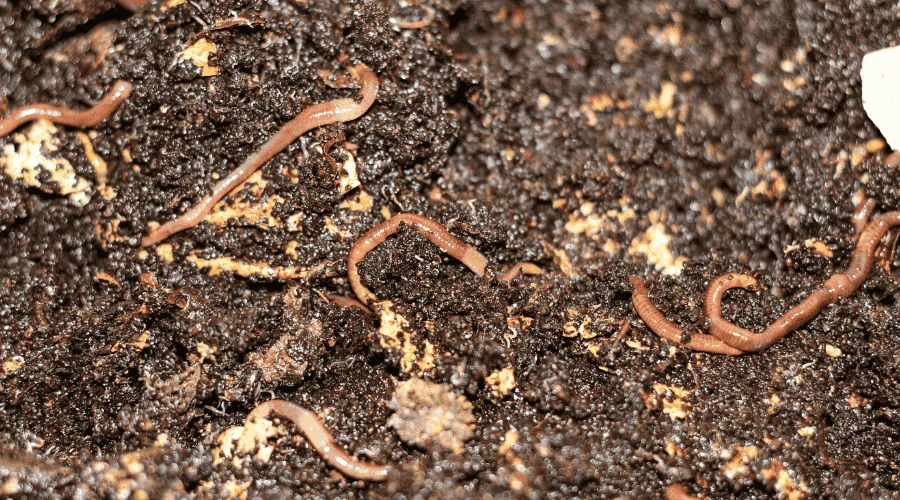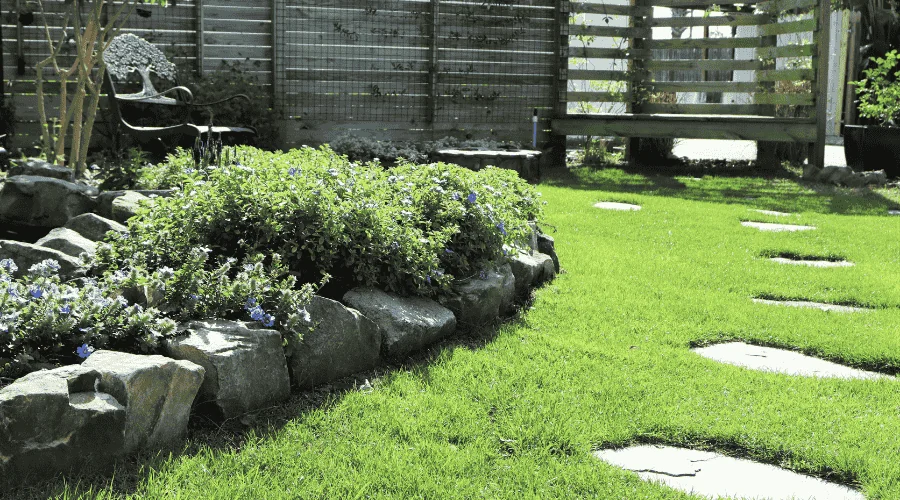By Amanda Rose Newton
Gardeners are always on the lookout for gentle, sustainable ways to improve plant health. Worm tea—a liquid extract made from worm castings—is one of the easiest, most effective, and earth-friendly fertilizers you can make at home. Here’s what it is, why it works, and how to start your own worm tea station right in your backyard.

What Is Worm Tea?
Worm tea is a nutrient-rich liquid made by steeping worm castings (vermicompost) in water. Think of it as a “compost brew” containing soluble nutrients and beneficial microbes. It’s not the same as leachate (the liquid that sometimes drains from a worm bin); true worm tea is deliberately brewed from finished castings.
When applied to soil or sprayed on leaves, worm tea delivers a burst of plant-available nutrition plus a diversity of beneficial bacteria and fungi.
Benefits of Worm Tea for Lawns & Gardens
- Natural Fertility: Provides soluble nitrogen, phosphorus, potassium, and micronutrients in a mild form that won’t burn plants.
- Healthy Soil Biology: Introduces beneficial microbes that improve soil structure and nutrient cycling.
- Pest & Disease Suppression: Some gardeners report fewer fungal problems after foliar sprays of worm tea because beneficial microbes outcompete harmful ones.
- Improved Growth & Resilience: Regular applications can lead to greener lawns, stronger root systems, and higher yields in vegetables and ornamentals.
- Eco-Friendly: Diverts food scraps from landfills and reduces reliance on synthetic fertilizers.

Best Worms for Vermicomposting
Not all worms are suited to composting. The champions are epigeic (surface-dwelling) species that thrive in decaying organic matter rather than mineral soil.
- Red Wigglers (Eisenia fetida) – The classic choice. Fast breeders, tolerate a wide range of conditions, great for beginners.
- European Nightcrawlers (Eisenia hortensis) – Larger, slightly slower breeders but good in cooler bins and can be used as fishing worms too.
- Indian Blue Worms (Perionyx excavatus) – Thrive in warm climates; prolific composters but can migrate if unhappy.
Most home setups use red wigglers because they’re easy to source and extremely forgiving.
How to Make a Simple Vermicompost Setup
You don’t need fancy equipment—a small plastic tote or wooden box will do.
What You’ll Need:
- A sturdy, opaque bin (10–20 gallons for beginners) with a tight-fitting lid
- Drill for ventilation and drainage holes
- Bedding material: shredded newspaper, coconut coir, or leaves
- A pound (roughly 1,000) of red wigglers–It’s not as many as you think!
- *Kitchen scraps (fruit/veg peels, coffee grounds, eggshells)
- Moisture source (spray bottle of water)
- *Note: DO NOT add meat or grease to the bin! Worms can’t handle it!
Step-by-Step:
- Prepare the Bin: Drill 1/8″ holes in the lid and along the upper sides for ventilation; a few holes in the bottom for drainage if indoors.
- Add Bedding: Fill half the bin with damp (not soggy) shredded newspaper or coir. A good way to visualize it is you want it to be moist in the way a wrung-out sponge would be.
- Introduce Worms: Place worms on top of bedding; they’ll burrow down on their own.
- Feed: Add a small handful of food scraps under the bedding. Cover food with more bedding to prevent flies.
- Maintain: Keep the bin between 55–80°F, add scraps gradually, and monitor moisture. Within 2–3 months you’ll have rich, dark worm castings.

Brewing Worm Tea
Once you have finished castings:
Basic Recipe (Non-Aerated):
- 1 cup worm castings per gallon of non-chlorinated water.
- Stir and let steep 12–24 hours, then strain.
Aerated Recipe (More Microbe Power):
- 1 cup worm castings per gallon of water.
- Add a teaspoon of unsulfured molasses (food for microbes).
- Bubble with an aquarium pump and air stone for 24 hours.
Apply to soil around plants or use as a foliar spray within 12 hours of brewing.
Garden Bug Pro Tips
- Leachate ≠ Worm Tea: Liquid draining from the bin isn’t the same as brewed tea. Use only finished castings for the best microbial mix.
- Don’t Overfeed: Worm bins smell only if overloaded with food scraps.
- Use Quickly: Freshly brewed worm tea has the most active microbes; apply the same day you brew.
- Regular Applications: Monthly or bi-weekly applications can noticeably improve lawn and garden health.

Worm tea is a low-cost, high-impact way to enrich your soil, feed your plants, and recycle kitchen scraps. With a simple worm bin and a handful of red wigglers, you can produce your own “liquid gold” for the garden all year long.


